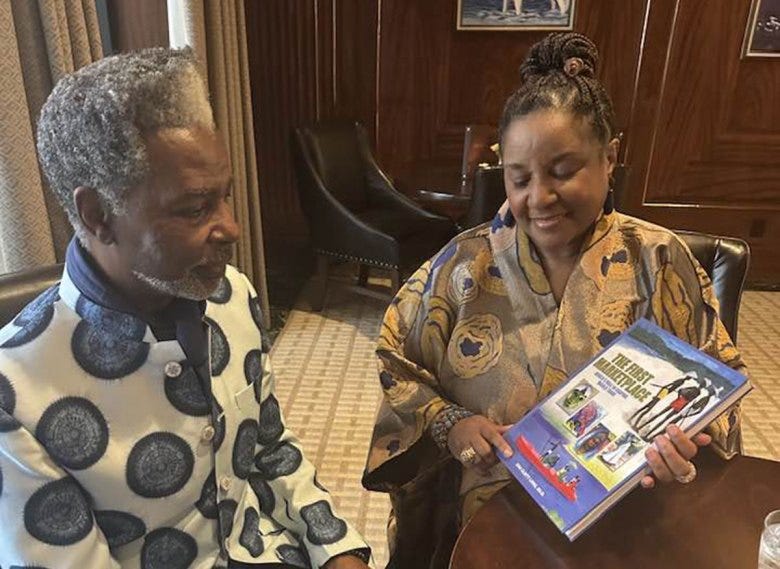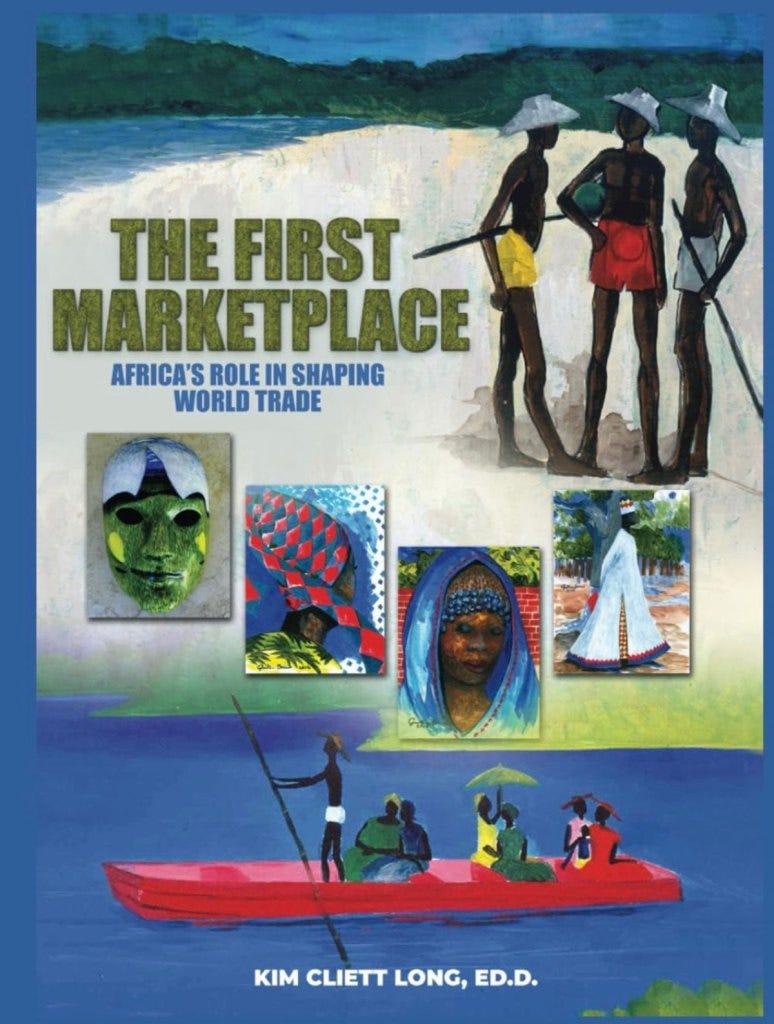The Long view: A new world vantage from a globetrotting scholar
Repost from Charleston City Paper
Author Kim Cliett Long has logged more global miles in the last few years than most individuals manage in a lifetime.
Traveling along the trade routes of ships, she has studied the intricate stitches of basketwork in cities like Salvador, Brazil, and countries like Cape Verde in Africa. She has homed in on ceramic vessels in the Philippines, Singapore, Malaysia and Australia. She has marveled at carved wooden masks in Papua New Guinea, batik textiles in Indonesia and coastal artwork in Portugal and Bali.
These objects bear African origins and today, many are sold by market women. It’s an occupation that also migrated out of the African continent. Long’s tracking of them has been for a single, perception-shifting aim: to demonstrate how global commerce was and is integrally tied back to Africa.

Long’s wending, worldly threads have been an all-consuming, rigorously researched, on-the-ground initiative, one that comes together in her new book, The First Marketplace: Africa’s Role in Shaping World Trade.
Published by the Jonathan Green Maritime Cultural Center at the University of South Carolina Beaufort, the hardcover, 146-page work challenges long-held narratives that have historically marginalized Africa’s role in economic history, restoring its rightful place at the center of world trade — and, beyond that, global culture.
“The connection between trade and cultural expression is undeniable,” she said. “Markets have always been more than places of commerce — they are spaces of creativity, resilience and community.”
Created as a textbook for middle school students — with activities, vocabulary, as well as critical thinking and review question — The First Marketplace was also conceived as an invaluable resource for adult readers and anyone interested in economic and world history, African heritage and the deep-rooted connections between past and present trade systems.
Green, the renowned South Carolina artist whose work celebrates the culture, history and traditions of the coastal African diaspora, created the cover art.
Through absorbing storytelling and a keen grasp for historical fact, Long, who is also an educator, uncovers the economic ingenuity of African civilizations, the trade networks that linked the continent to Europe, Asia and the Americas, and the enduring influence of Africa’s market traditions on global commerce, including its expansive marketplaces, maritime trade routes and economic innovations.
Never passive
In many respects, a maritime center is the tell-tale heart of a port city, at once the source of local prosperity and of global impact. All in all, Long has visited those in Europe, Brazil, Uruguay, Central America, Panama, Mexico, Southeast Asia, the Middle East — and the continent that connects them all: Africa.
Meeting with curators, museum directors and cultural leaders, she has also toured numerous institutions and attended cultural performances. Among them was a performance in Vietnam that took place on, in and around water, opening with a scene of Africans first arriving in the country.
“I’ve been getting firsthand information from them as well as by looking at archives,” she said.
What she has learned is just how essential and active Africa has been throughout time.
“Africa was never a passive player in world history,” said Long, who also emphasizes that Africa’s agency remains operative in global commerce today. From gold, salt and textiles to art, agriculture and entrepreneurship, its contributions continue to shape markets.
The revelatory narrative is more than the sum of its numerous far-flung and fascinating stories.
“In telling the story of ancient Africa’s historic trade networks, we are not just looking at the past — we are reclaiming the truth about Africa’s enduring influence on global economies.”
The First Marketplace: Africa’s Role in Shaping World Trade ($39.99, Jonathan Green Maritime Cultural Center at USCB) is available locally at Buxton Books and also on Amazon.





